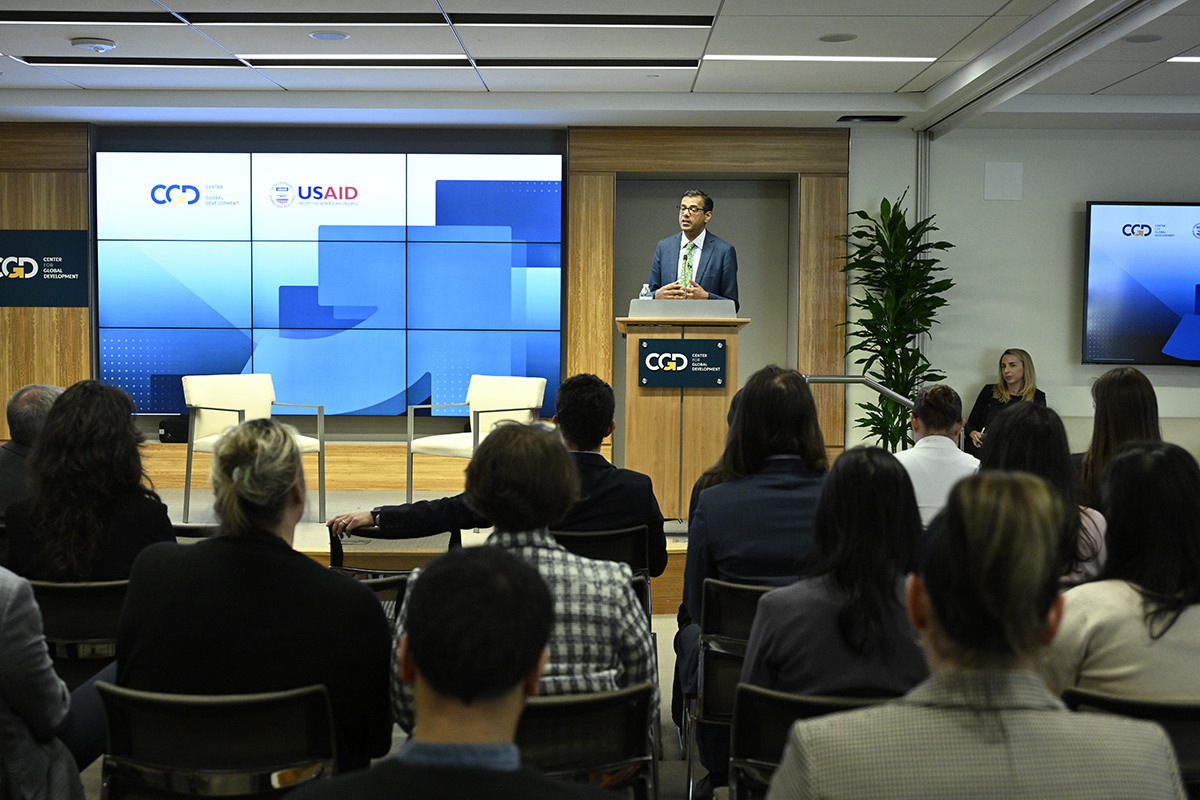This week, the White House unveiled the first National Security Strategy of the Trump administration. As always, we were eager to see how the strategy considered the role of development. Presidents George W. Bush and Barack Obama famously elevated development, recognizing its importance alongside military might and smart diplomacy in promoting national security. We don’t see the same rhetorical treatment here, but the new strategy includes plenty of development-related content. While there’s a lot to unpack in the 68-page document, here are few things that caught our eye.
A Real Chance at 21st Century Development Finance
With two explicit references in the new strategy to the importance of modernized US development finance tools to foster stability and prosperity around the world, it’s almost hard to believe that earlier this year we worried that the administration would attempt to dismantle the United States’ development finance agency. But even before he was sworn in, OPIC’s President and CEO Ray Washburne championed a growth agenda for the agency. The strategy also rightly points out that more and more developing countries are seeking investments and financing—frequently to pursue infrastructure projects—suggesting an important opening for development finance, which works to crowd in private sector investment in frontier markets. CGD experts have long urged the United States to strengthen its development finance tools—giving OPIC resources and authorities more in line with those of its European counterparts. With strong support already building in Congress, the strategy is further proof that a self-sustaining, full-service US Development Finance Corporation may finally be on the horizon.
Deliberately Targeting US Development Assistance
The new strategy echoes USAID Administrator Mark Green’s repeated calls to make the chief goal of US development assistance ending its need to exist. And it invokes the idea of moving away from heavy grant-based assistance toward approaches that draw upon the resources of the private sector, consistent with USAID’s pursuit of “strategic transitions.” Given the changing global landscape, if the United States is serious about promoting development—or “advancing American influence” as the strategy suggests—it will need to look to avenues of engagement that extend beyond aid, employ innovative approaches, and encourage country ownership. There are good reasons to transition the US model of engagement in select countries from one characterized by a reliance on grant-based aid to one that better matches a partner country’s needs. But as recent CGD analysis uncovered, if that process is driven primarily by budget or political pressures, it is unlikely to succeed.
Charting a Direction for US Multilateral Engagement
As early as page three, the strategy expresses some skepticism about the role of international institutions and other multilateral forums. It goes on to acknowledge an important role for US leadership in these institutions, noting the “competition for influence,” and even promises a continued leading role for the United States in the World Bank, the IMF, and other institutions. But we’ve already seen signs of retrenchment from this administration, which—as my colleague Scott Morris has pointed out—contrast starkly with China’s growing ambition. As a major shareholder, the United States can and should ask tough questions of the World Bank and other institutions, but the administration should also recognize the remarkable advantages of multilateral investments—particularly with respect to multilateral development banks, which have great leverage ratios, unique instruments, and impressive geographic and sectoral scope.
Demonizing Immigrants Rather than Leveraging Their Potential
We weren’t the only ones to notice the new strategy’s heavy emphasis on legal immigration to the United States—or the suggestion that much of that immigration threatens our national interests and security. Such blanket assertions just aren’t supported by the facts. The reality is starkly different, and markedly positive: the Organisation for Economic Co-operation and Development (OECD) has estimated that US immigrant households pay over $8,000 per year more in taxes and social security contributions than they receive in social transfers. Meanwhile studies have shown that immigrants to the United States are less likely to commit crimes than native-born Americans or have no effect on the crime rate. And migration has a variety of knock-on benefits for development. If anything, the United States should seek to leverage migration for greater prosperity and stability abroad.
A Stark Disconnect with Proposed Resources
Finally, while this national security strategy does not shy away from highlighting threats and challenges, looming large are the deep cuts to international affairs spending included in the president’s FY2018 budget request. If the administration’s FY2019 request looks anything like last year’s, it will be difficult to imagine the United States truly being ready to tackle a global pandemic (a matter of when—not if), remain a leader in humanitarian response, provide meaningful assistance in fragile state contexts, or fulfill many of the strategy’s other bold promises.
CGD blog posts reflect the views of the authors, drawing on prior research and experience in their areas of expertise.
CGD is a nonpartisan, independent organization and does not take institutional positions.





